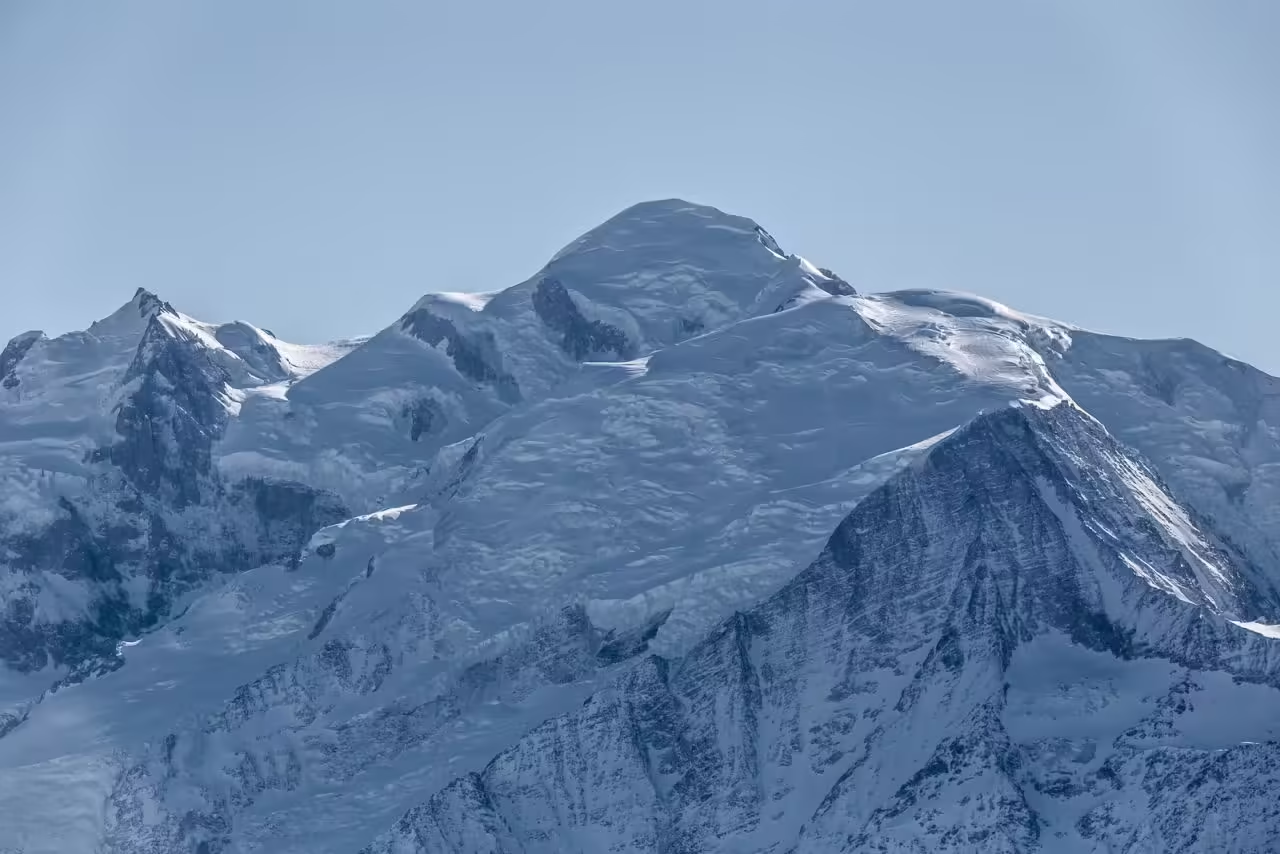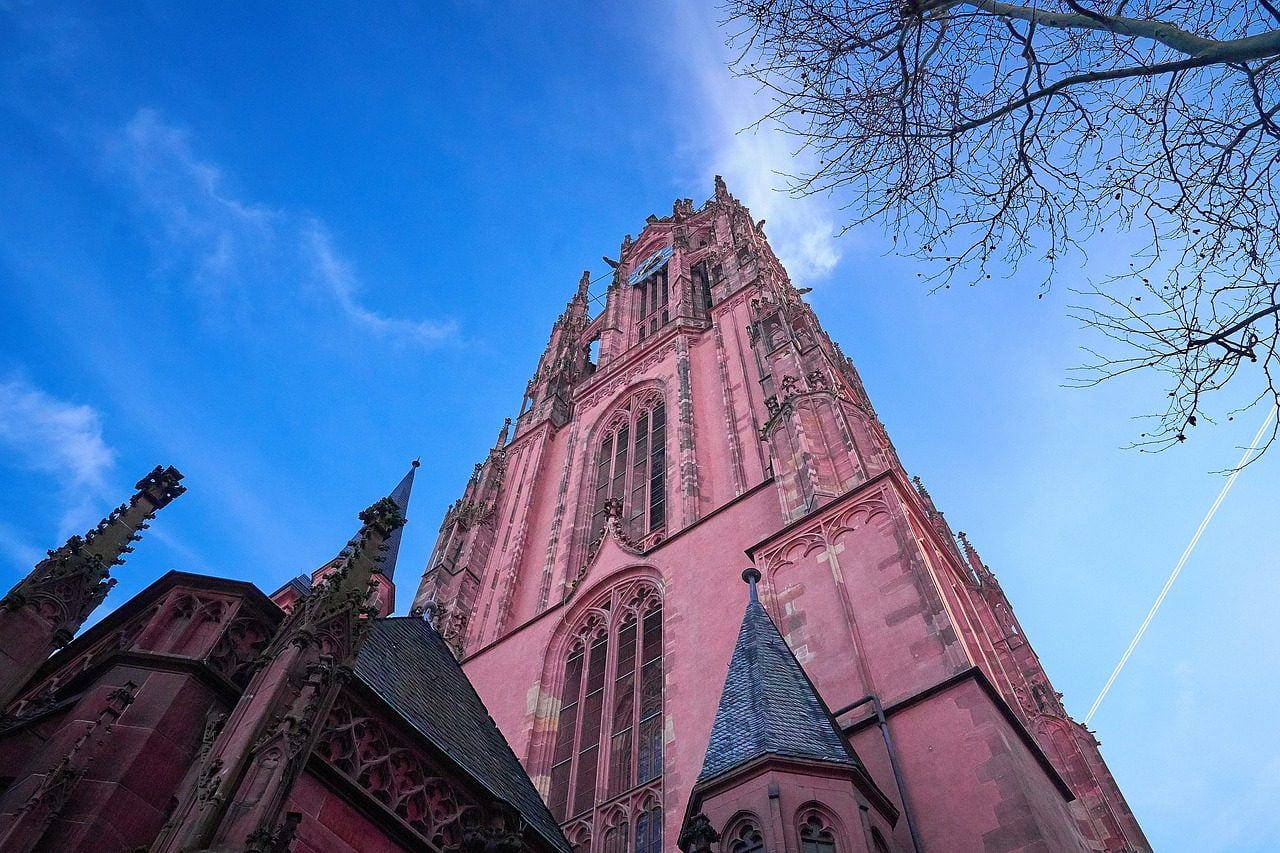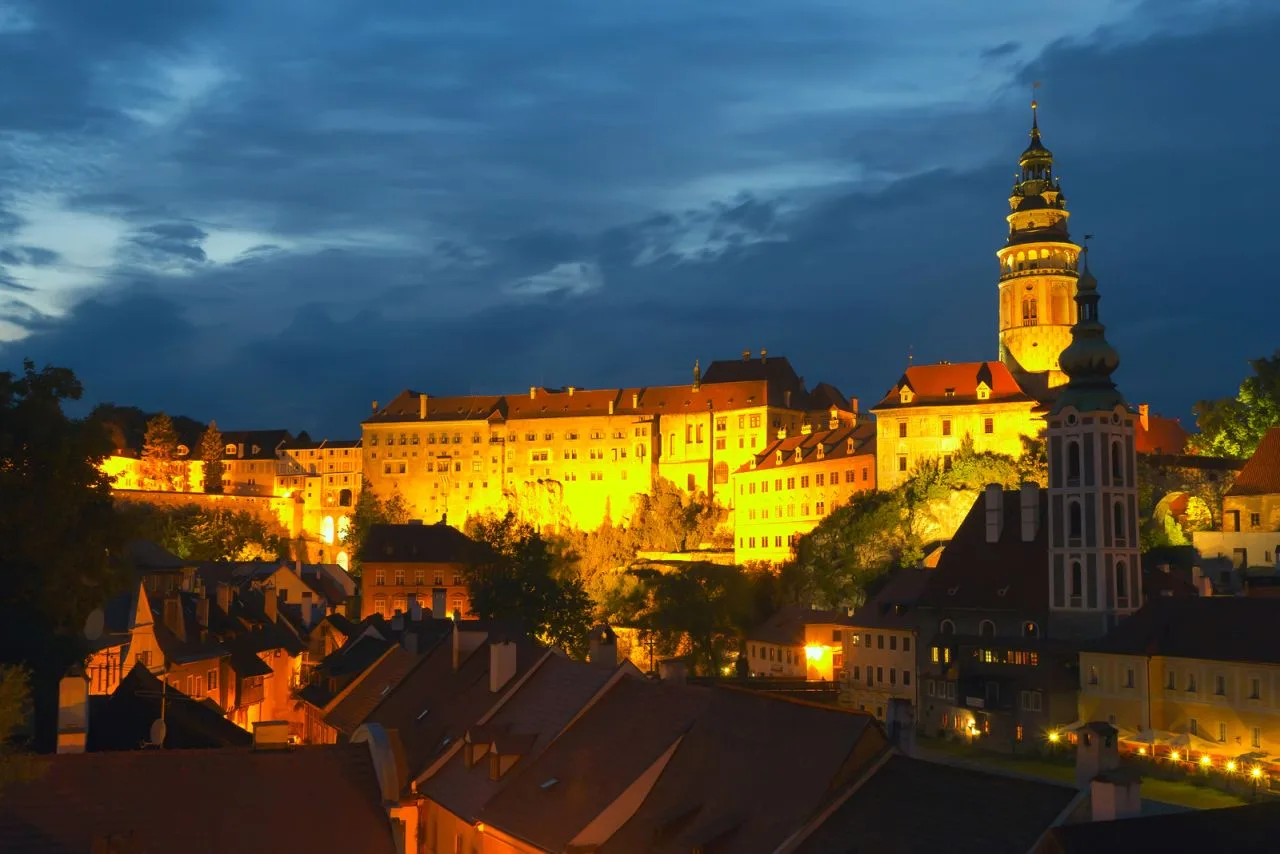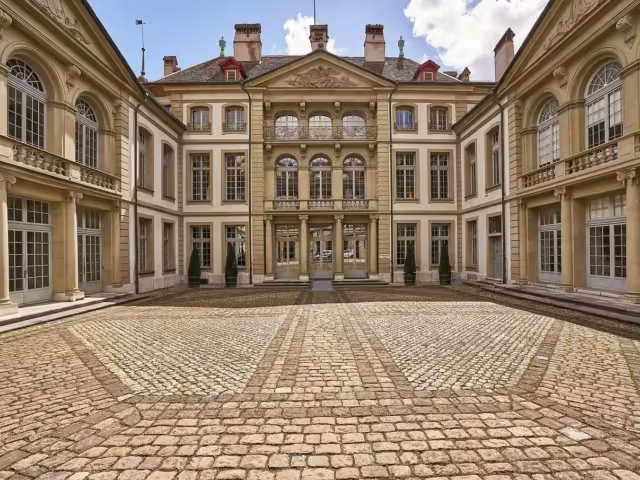Mont Blanc travel guide
Address
Mont Blanc
GPS
45.8327056, 6.8651706
Nestled in the heart of the French Alps, Mont Blanc stands as Europe’s highest peak and a dream destination for adventurers and nature lovers alike. With its stunning landscapes, thrilling activities, and rich culture, this majestic mountain draws visitors from all corners of the globe. Whether you seek adrenaline-pumping hikes or serene moments gazing at snow-capped summits, Mont Blanc has something to offer everyone.
This travel guide will take you through the best things to do in this breathtaking region, where every corner reveals a new adventure waiting to unfold. Get ready to explore one of nature’s finest masterpieces!
Mont Blanc: Fascinating Facts and Figures
Mont Blanc, also known as “White Mountain,” is the highest peak in Western Europe and one of the most iconic mountains in the world. Located in the Alps, Mont Blanc stands as a symbol of natural beauty and a challenge for mountaineers. Here are some interesting facts and figures about Mont Blanc:
1. Location and Geography
- Location: Mont Blanc is situated in the Alps, on the border between France and Italy. It lies within the Mont Blanc massif, a mountain range that spans the two countries.
- Coordinates: The peak is located at approximately 45.832°N latitude and 6.865°E longitude.
- Surrounding Areas: The mountain is near the French town of Chamonix and the Italian town of Courmayeur, both of which are popular bases for exploring the area.
2. Height and Elevation
- Height: Mont Blanc is the highest mountain in the Alps and Western Europe. Its official height is approximately 4,808 meters (15,774 feet) above sea level, though the exact height can vary slightly due to snow and ice accumulation.
- Elevation Changes: The height of Mont Blanc is measured periodically, as the summit is covered with a snow cap that changes with the seasons and climate conditions. The highest recorded measurement was 4,810.90 meters (15,781 feet) in 2007.
3. Glaciers and Ice Fields
- Glaciers: Mont Blanc is home to several large glaciers, including the Mer de Glace, which is the longest glacier in France at approximately 7.5 kilometers (4.7 miles) in length. Other significant glaciers include the Glacier des Bossons and Glacier de Taconnaz.
- Ice Cap: The summit of Mont Blanc is covered by a permanent ice cap, contributing to the mountain’s snow-covered appearance and name.
4. Mountaineering and Climbing
- First Ascent: The first recorded ascent of Mont Blanc was on August 8, 1786, by Jacques Balmat and Dr. Michel-Gabriel Paccard, marking the beginning of modern mountaineering.
- Climbing Routes: There are several popular routes to the summit, including the Goûter Route (the most commonly used), the Three Monts Route, and the Italian Route. The climb is technically challenging and requires experience in high-altitude mountaineering.
- Climbing Season: The best time to climb Mont Blanc is during the summer months, typically from June to September, when weather conditions are more favorable.
5. Tourism and Outdoor Activities
- Tourist Attractions: Mont Blanc is a major tourist destination, attracting millions of visitors each year. Popular activities include skiing, snowboarding, hiking, and paragliding.
- The Aiguille du Midi: A cable car ride to the Aiguille du Midi, a peak in the Mont Blanc massif, provides stunning views of Mont Blanc and the surrounding Alps. The cable car ascends to an altitude of 3,842 meters (12,605 feet), making it one of the highest in Europe.
- Mont Blanc Tunnel: The Mont Blanc Tunnel, completed in 1965, is a major engineering feat that runs 11.6 kilometers (7.2 miles) beneath the mountain, connecting France and Italy. It is one of the longest road tunnels in the world.
6. Environmental and Climate Concerns
- Climate Change: Mont Blanc, like many other glacial regions, is affected by climate change. The glaciers on the mountain have been retreating over the past century due to rising temperatures, raising concerns about the long-term impact on the region’s ecology and tourism.
- Conservation Efforts: The Mont Blanc region is protected under various environmental regulations, and efforts are being made to preserve its natural beauty and reduce the environmental impact of tourism.
7. Interesting Historical Facts
- First Scientific Expedition: In 1787, a year after the first ascent, Horace-Bénédict de Saussure led the first scientific expedition to Mont Blanc, studying the geology and meteorology of the mountain.
- Tragic Air Disasters: Mont Blanc has been the site of two major air disasters. In 1950 and 1966, two Air India planes crashed into the mountain, resulting in the deaths of all passengers and crew members on board. The remains of these planes, along with their debris, can still be found on the mountain.
- Cultural Impact: Mont Blanc has inspired artists, writers, and adventurers for centuries. It features in literature, such as Mary Shelley’s “Frankenstein,” where the mountain serves as a dramatic backdrop for the story’s events.
8. Cultural and Symbolic Significance
- Mont Blanc as a Symbol: Mont Blanc is not only a natural wonder but also a symbol of exploration, adventure, and the human spirit’s desire to conquer the unknown. It has been a source of inspiration for poets, artists, and adventurers throughout history.
- National Pride: The mountain is a source of national pride for both France and Italy. It has been depicted on French stamps, currency, and in various works of art.
9. Scientific Research
- Geological Studies: Mont Blanc is of great interest to geologists due to its complex formation and the presence of different types of rock, including granite and gneiss. The mountain is an excellent site for studying the effects of glaciation and erosion.
- High-Altitude Research: The Mont Blanc region is also used for high-altitude scientific research, including studies on human physiology in extreme conditions, weather patterns, and climate change.
10. Miscellaneous Facts
- Population: The Mont Blanc massif is surrounded by several small towns and villages, with Chamonix being the most famous. Chamonix hosted the first Winter Olympics in 1924.
- Cross-Border Nature: Mont Blanc’s peak lies on the border between France and Italy, and both countries claim the summit. However, the official border is still a subject of some debate between the two nations.
- Mont Blanc Pen: The Mont Blanc name is also used for luxury goods, such as the famous Montblanc pens, which symbolize high quality and craftsmanship.
Mont Blanc continues to captivate the imagination of adventurers, scientists, and nature lovers alike. Its towering presence and the challenges it presents make it a true icon of the natural world.
Things to do in Mont Blanc
Mont Blanc offers a plethora of adventures for every kind of traveler. For hiking enthusiasts, the trails around the mountain provide breathtaking views and invigorating experiences. The routes vary in difficulty, making it accessible to beginners and seasoned climbers alike.
 Skiing and snowboarding are top attractions during winter months. With its pristine slopes, Mont Blanc transforms into a snowy paradise that thrills both novices and experts. Enjoy the crisp air as you glide down various terrains.
Skiing and snowboarding are top attractions during winter months. With its pristine slopes, Mont Blanc transforms into a snowy paradise that thrills both novices and experts. Enjoy the crisp air as you glide down various terrains.
Cultural activities abound too! Explore charming alpine villages filled with rich history. Visit local museums showcasing art inspired by this majestic landscape. Food lovers can indulge in traditional Savoyard cuisine at cozy eateries dotted throughout the region.
Whether you’re seeking adrenaline or relaxation, Mont Blanc has something special waiting for you at every turn.
A. Hiking and Mountain Climbing
Hiking and mountain climbing in Mont Blanc are truly unforgettable experiences. The breathtaking views alone make every step worth it. With trails for all skill levels, there’s something for everyone here.
 For seasoned climbers, the ascent to the summit of Mont Blanc offers a thrilling challenge. This iconic peak stands tall at 4,808 meters and rewards adventurers with panoramic vistas that stretch endlessly.
For seasoned climbers, the ascent to the summit of Mont Blanc offers a thrilling challenge. This iconic peak stands tall at 4,808 meters and rewards adventurers with panoramic vistas that stretch endlessly.
If you’re looking for easier hikes, explore routes like the TMB (Tour du Mont Blanc). This stunning trek weaves through charming alpine villages and lush valleys filled with wildflowers during summer months.
Don’t forget to pack proper gear! Weather conditions can change rapidly in the mountains. Staying safe ensures you can enjoy this magnificent outdoor playground without worry.
Whether you’re scaling rocky cliffs or strolling along scenic paths, Mont Blanc’s natural beauty captivates every hiker’s heart.
B. Skiing and Snowboarding
Mont Blanc is a winter paradise for skiing and snowboarding enthusiasts. The vast array of slopes caters to all skill levels, from beginners to seasoned pros.
The Mont Blanc ski area boasts over 400 kilometers of pistes. You can glide through breathtaking landscapes with the majestic peaks as your backdrop. Each run offers a unique experience, whether you prefer groomed trails or off-piste adventures.
For those new to the sport, numerous schools offer lessons in both skiing and snowboarding. Expert instructors are eager to help you find your rhythm on the slopes.
After an exhilarating day in the snow, unwind at cozy mountain lodges or indulge in local cuisine. Savoring a warm cup of hot chocolate feels like true bliss after hitting the slopes all day.
The vibrant après-ski scene adds another layer of excitement to your Mont Blanc experience, ensuring that adventure continues long after sunset.
C. Sightseeing and Cultural Activities
Mont Blanc isn’t just about thrilling outdoor adventures. The region is rich in culture and history, offering a variety of sightseeing opportunities.
 Begin your journey in Chamonix, where charming streets are lined with boutiques and cafes. Explore local art galleries showcasing the works of talented regional artists.
Begin your journey in Chamonix, where charming streets are lined with boutiques and cafes. Explore local art galleries showcasing the works of talented regional artists.
Don’t miss the Aiguille du Midi cable car ride. It takes you to breathtaking views of Mont Blanc’s summit that will leave you speechless. At the top, there’s an observation deck for stunning panoramic vistas.
For history enthusiasts, visit the Musée des Cristaux or take a guided tour through ancient alpine villages like Les Houches. These places echo stories from generations past.
Indulge in Savoyard cuisine at traditional mountain restaurants. Savor dishes such as fondue and raclette while enjoying serene mountain views—a true cultural immersion!
Where to Stay in Mont Blanc
When it comes to accommodation in Mont Blanc, options abound. For those seeking luxury, numerous hotels and resorts cater to every need. Picture waking up with breathtaking views of the peaks right outside your window. Many also offer amenities like spas and gourmet dining.
If you prefer a more rustic experience, consider staying in chalets or cabins. These wooden retreats often provide a cozy atmosphere with all the comforts of home. They’re perfect for families or groups looking for privacy after a day of adventure.
For travelers on a budget, hostels and guesthouses are available too. They can be great places to meet fellow adventurers while keeping costs low.
No matter what type of stay you choose, Mont Blanc’s charm will make your trip unforgettable.
A. Hotels and Resorts
When it comes to accommodation, Mont Blanc offers a variety of hotels and resorts that cater to different preferences. Luxury seekers can indulge in high-end establishments boasting stunning views and top-notch amenities. Imagine sipping hot cocoa while gazing at the majestic peaks from your balcony.
 For those who prefer a more intimate experience, boutique hotels provide charm and personalized service. These cozy spots often reflect the local culture, enhancing your stay with unique decor and delightful breakfast options.
For those who prefer a more intimate experience, boutique hotels provide charm and personalized service. These cozy spots often reflect the local culture, enhancing your stay with unique decor and delightful breakfast options.
If you’re after convenience, many resorts are strategically located near ski lifts or hiking trails. This makes it easy to hit the slopes or embark on an adventure without wasting time on transportation.
Don’t forget about family-friendly choices as well! Many hotels offer spacious rooms and kid-friendly activities, ensuring everyone has a great time exploring this beautiful region together.
B. Chalets and Cabins
Chalets and cabins in Mont Blanc offer a cozy escape surrounded by stunning alpine scenery. These charming accommodations provide an authentic mountain experience, perfect for nature lovers.
Many chalets feature traditional wooden architecture with modern amenities. Imagine sipping hot cocoa by a roaring fire after a day outdoors. The ambiance is warm and welcoming.
Cabins often come equipped with kitchens, allowing you to prepare meals using local ingredients from nearby markets. Picture enjoying dinner with loved ones while gazing at snow-capped peaks through large windows.
For those seeking solitude, secluded cabins nestled in the woods are available. They provide peaceful retreats away from bustling tourist spots, ideal for reflection or simply unwinding amid nature’s beauty.
Choosing a chalet or cabin enhances your Mont Blanc visit significantly. This unique lodging option creates lasting memories that elevate your adventure in this breathtaking region.
Best Time to Visit Mont Blanc
The best time to visit Mont Blanc largely depends on your interests. If you’re a hiking enthusiast, late spring to early fall is ideal. The trails bloom with wildflowers and offer stunning views.
For skiing and snowboarding lovers, the winter months from December to March are perfect. The slopes come alive with fresh powder, drawing thrill-seekers from around the globe.
Summer is great for sightseeing as well. You can explore charming villages and local markets under sunny skies.
Autumn offers a quieter experience with fewer tourists. The landscape transforms into a tapestry of reds and golds.
Keep in mind that weather conditions can vary dramatically at high altitudes year-round. Always check forecasts before planning your trip to ensure an enjoyable experience in this breathtaking region.
How to Get to Mont Blanc
Getting to Mont Blanc is an adventure in itself. For those flying, the nearest major airports are Geneva and Chambery. Both offer a range of international flights, making it easy to reach this stunning destination.
 Once you land, renting a car provides flexibility for exploring the picturesque surroundings. The drive offers breathtaking views as you approach the Alps.
Once you land, renting a car provides flexibility for exploring the picturesque surroundings. The drive offers breathtaking views as you approach the Alps.
Alternatively, if trains are more your style, take advantage of Europe’s extensive rail network. Trains connect to nearby towns like Chamonix and Saint-Gervais-les-Bains from major cities such as Geneva or Lyon.
For those who prefer bus travel, various services run direct routes from these train stations into the heart of Mont Blanc territory. Each option serves up its own slice of scenic beauty along the way.
A. Travel by Air
Flying to Mont Blanc is a popular choice for travelers. The nearest major airport is Geneva International Airport, located about 85 kilometers away.
Once you land in Geneva, the journey to Mont Blanc can be seamless. Numerous shuttle services and rental cars are available right at the airport. This makes reaching your destination easy, allowing you to soak in those stunning mountain views quickly.
For those traveling from other European cities, direct flights often connect well with regional airports like Chambery or Annecy. These smaller airports provide closer access and a more intimate travel experience.
Airlines frequently offer competitive rates for flights into this beautiful region. Booking in advance can help secure better deals during peak seasons when tourism flourishes around Mont Blanc’s breathtaking landscapes.
B. Travel by Train or Car
Traveling to Mont Blanc by train offers a scenic experience unlike any other. The journey takes you through picturesque landscapes, quaint villages, and lush valleys. Trains from major cities like Geneva or Chamonix glide smoothly towards this majestic mountain range.
If you prefer driving, the road to Mont Blanc is equally captivating. Renting a car gives you the flexibility to explore hidden gems along the route. You can stop at charming spots for photos or take detours for breathtaking views.
Parking options are plentiful in nearby towns such as Chamonix. This makes it convenient whether you’re just visiting for a day trip or planning an extended stay.
Both travel methods provide unique perspectives of Mont Blanc’s stunning natural beauty. Choose based on your style and enjoy every moment of the journey!
Conclusion
Mont Blanc is an incredible destination that offers a variety of experiences for all types of travelers. Whether you seek adventure through hiking and mountain climbing or prefer the thrill of skiing, this majestic region has something for everyone. The rich culture and breathtaking views add to its charm.
When it comes to accommodations, options abound from luxurious hotels to cozy chalets, ensuring every visitor finds their perfect retreat. Each season brings its own unique beauty, making Mont Blanc appealing year-round.
Getting there is straightforward with various travel methods available, allowing you to immerse yourself in this picturesque landscape without hassle. A trip to Mont Blanc promises unforgettable memories filled with exploration, relaxation, and natural wonder. Embrace the adventure that awaits you at one of Europe’s most iconic mountains!




